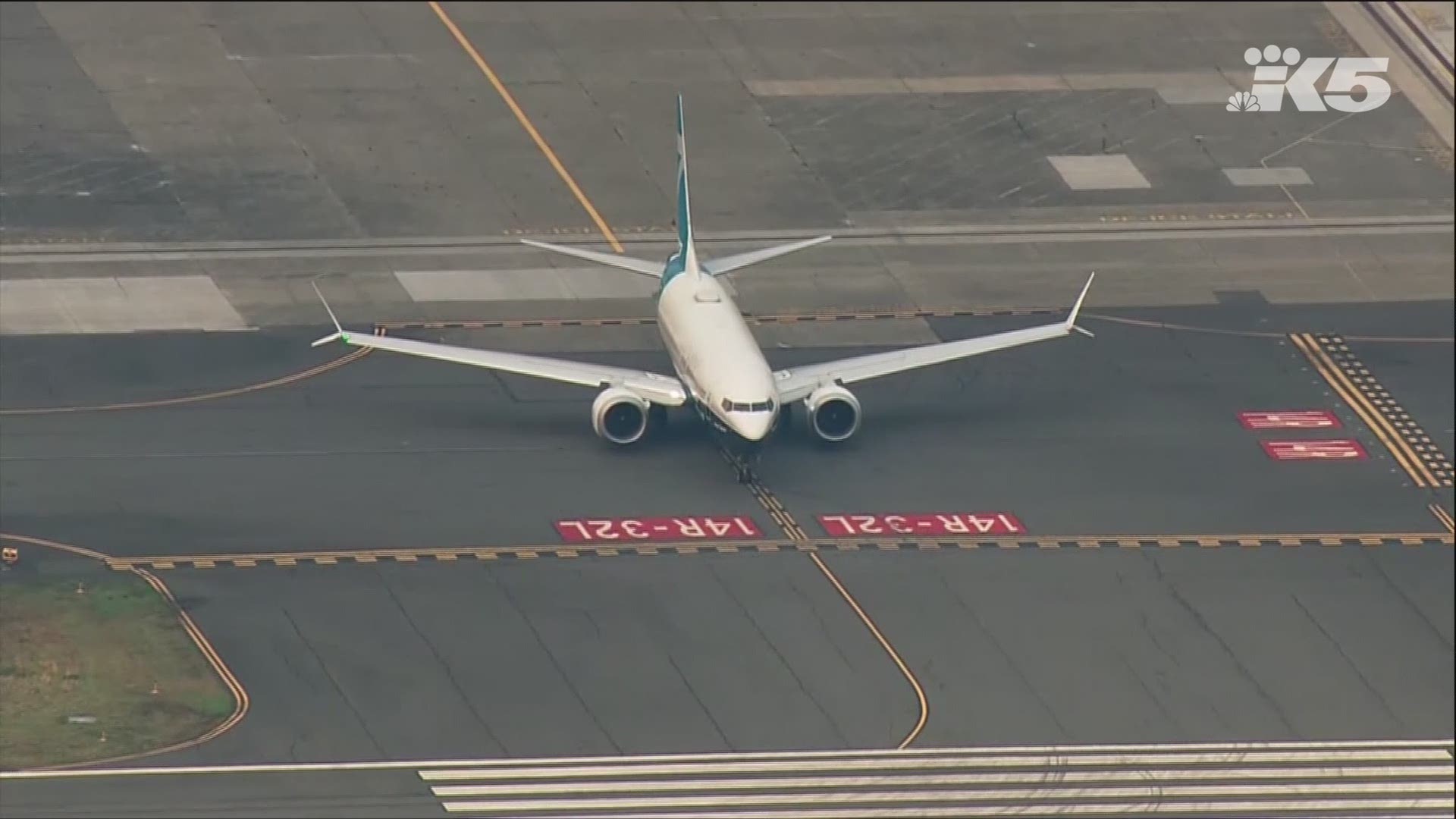RENTON, Wash. — On Tuesday, FAA Administrator Steve Dickson was aboard a full-motion simulator in the Seattle area before his test flight of a Boeing 737 MAX on Wednesday.
The fleet has been grounded by the FAA since March 13, 2019, following two deadly crashes that claimed 346 lives.
The FAA said it will not rush a lift of the grounding, but it’s believed the plane could be permitted for commercial flights by Nov. 2020.
On Wednesday, Dickson and Deputy Administrator Dan Elwell, the FAA's top two officials, will address media questions about the flight and where the FAA stands as several more milestones remain to be worked through before the 18-month-old grounding is lifted.
The test flight comes just after the Transportation and Infrastructure Committee in the House of Representatives released legislation resulting from its investigation into what went wrong with Boeing and the FAA, which permitted a piece of software called MCAS onto the MAX without being fully vetted.
MCAS is considered at the core of two 737 MAX crashes in 2018 and 2019 that resulted in the deaths of 346 people.
"Safety has to be the primary role for the FAA, and that's one of the concerns we had in our investigative report, that Boeing and the FAA were too close, and that needs to be separated,” said Rep. Rick Larsen, the Washington state Democrat who is chair of the Aviation Subcommittee.
It was a system where too much of the FAA’s authority was delegated to Boeing employees, which is a major theme in the Aircraft Certification Reform and Accountability Act.
While those designated employees were supposed to be working on the agency’s behalf, it was felt that they could be vulnerable to management pressure in a system that had become too chummy.
Both Boeing and the FAA are faulted for failing to properly assess the risks involving the MCAS system. MCAS is unique to the 737 MAX and is designed as a piece of automated software to better help the pilots control the plane through certain maneuvers.
However, most pilots had no idea it was there and in the crashes, MCAS deployed repeatedly, forcing the nose of the jet down, causing confusion for the pilots who ultimately lost control of their airplanes.
The legislation is also aimed at further research in addressing the way pilots interact with the growing levels of automation onboard today’s jets and in the future. It also calls upon the world’s aviation regulators to train pilots better on how to manually fly planes when the automation acts up or fails.
The system for certifying airplanes in the U.S. has evolved over the decades. And while the two MAX crashes stand out against a background where flying has actually grown increasingly safe in recent decades, it is also a system where the FAA has not received the money considered necessary to maintain its independence as a regulator.
Larsen said he expects that money to be there now.
“We are increasing the authority of the FAA to hire more people in the certification business, so this becomes faa led and not manufacture led," Larsen said.

